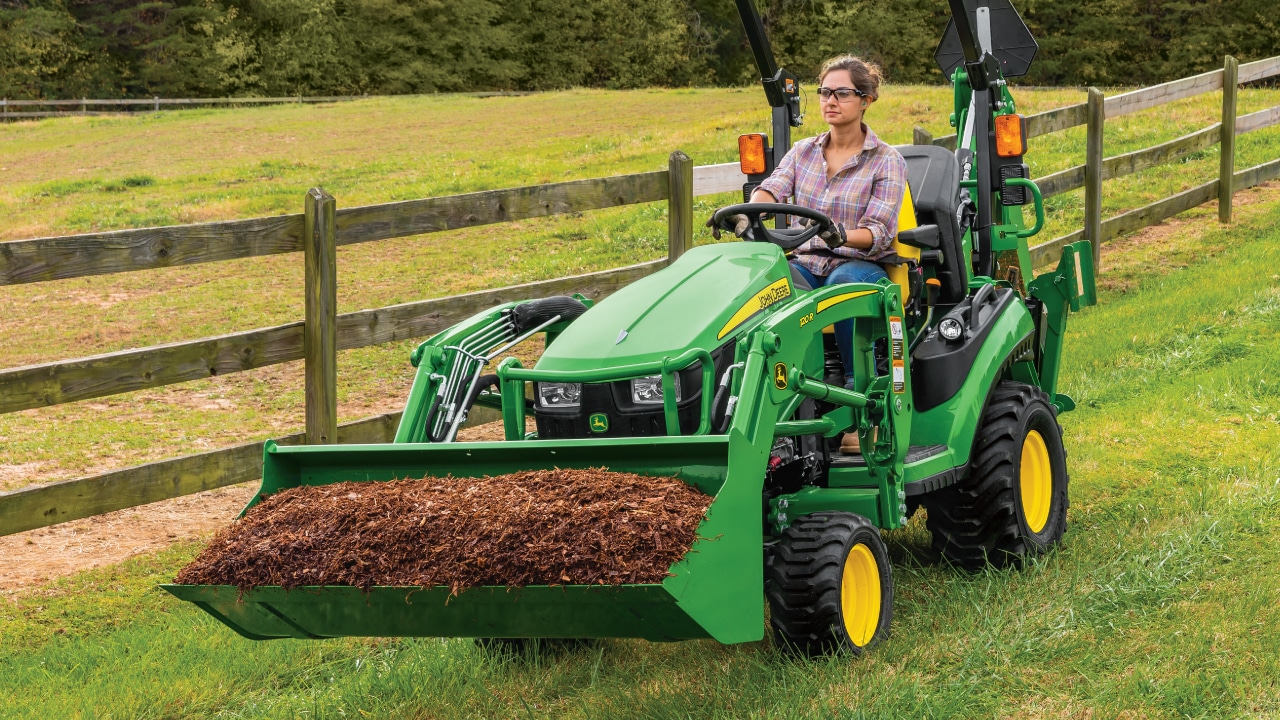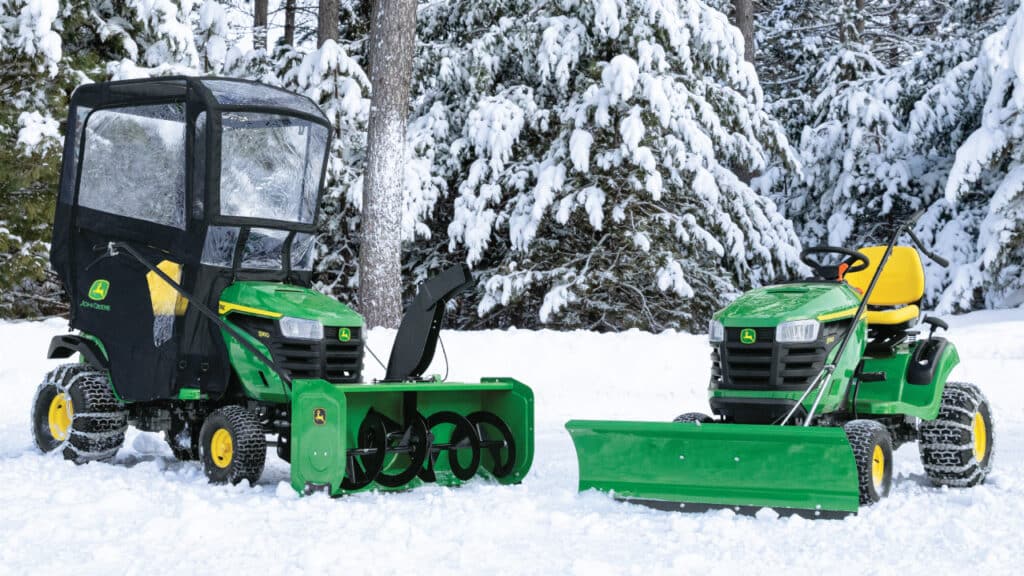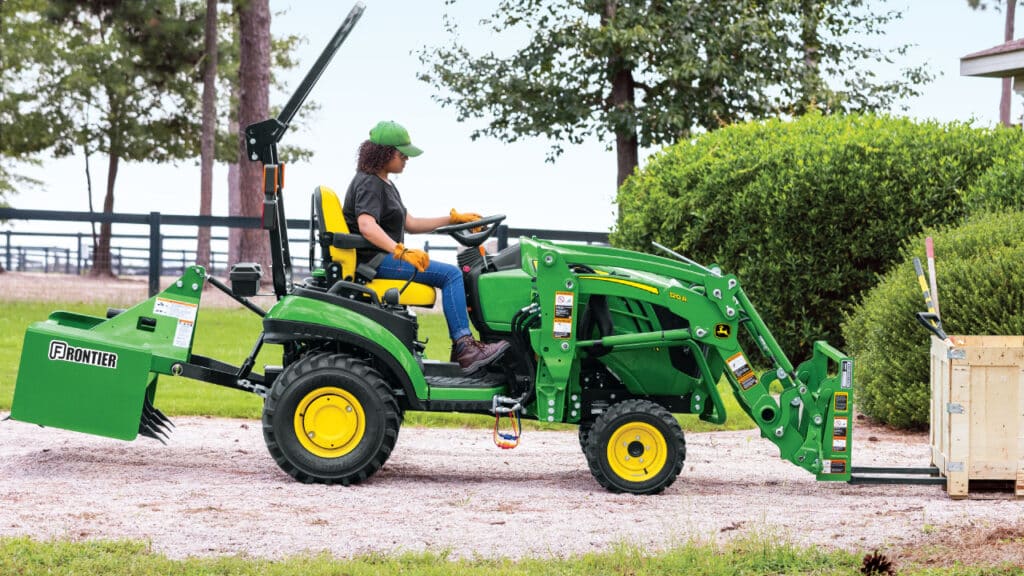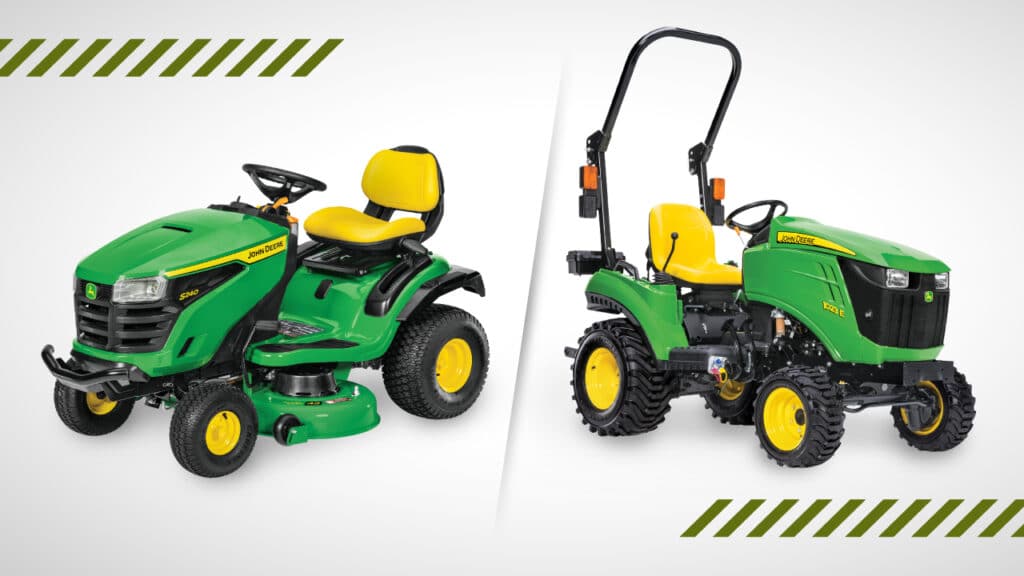
It’s okay to admit: new farm equipment makes you a little giddy. It makes us get all excited, too. After all, a quality new utility — or compact — tractor can make all the difference in your yard and farm duties. These beauts have great engines and can take on just about any job. With different attachments available, you can use your new utility tractor to mow, plow, dig and more. How can you not get excited about that?
But before you can make your land look stellar, you need to know how to use your utility tractor. That’s where we come in. Learn all about the great features of compact tractors and make your farm work a little bit more fun.
Features of a Utility Tractor
Utility tractors have a number of different features. They are versatile pieces of equipment that you can use year-round. As many farmers in Minnesota know, if you can find multiple uses for your machinery, you take advantage. That is why utility tractors are a handy tool to have lying around.
While each tractor may be slightly different, they all contain the same basic components:
- Front Loader: A bucket or scoop located on the front of the compact tractor. This can be used to plow snow, push dirt or lift whatever you may desire.
- Attachments: These tractors truly do it all. Attach rakes, mowers, diggers, tillers or plows to the front or back of the tractor.
- Engine: This baby can fit so much farm and lawn care inside. Most compact tractors have all-wheel drive capabilities. Plus, they run with manual transmission. So, if you’ve never tired your arm by rolling your car’s windows down, you may need to learn how to drive a stick.
- Lights: Use low beams or high beams when operating the tractor, especially in poor conditions or at night.
Take some time to get familiar with the different levers and buttons on your equipment. There are multiple of each, and they all have different purposes. For example, looking at the steering wheel, there will be at least one lever on each side. One will control the throttle (typically on the right hand side), while the other will send the tractor forward, reverse or keep it in neutral (typically on the left hand side).
On the right, next to the driver’s seat, will be two levers. The larger one will control the front loader and the smaller one will be to move any back attachments. There is also the gear shift on the left of the driver seat. Finally, your tractor will have a button to control the attachments, and one to control the all-wheel drive.
Basic Operations
When you’re ready to get going, hop on your tractor. You’ll notice it looks relatively similar to a car. The dashboard shows lights for the oil and battery, and there are multiple gauges, as well. While it may look like a speedometer, the middle gauge does not measure speed. It is the tachometer, which measures engine speed. Be sure to familiarize yourself with your own tractor’s dashboard, lights and gauges.
To start your tractor, make sure to set it in neutral, and turn the throttle all the way down. Turn the key one notch — not all the way at first — to get the equipment warmed up for half a minute or so. Then, just as with a manual car, push down on the clutch and start the engine. Your tractor should be up and running!
Once you’re set, you can put the tractor in forward and push down on the gas. To reverse, simply pull the lever all the way toward you. Remember that utility tractors are manual, so be sure to engage the clutch when you shift gears. Take some time to read your individual equipment’s manual and learn how each gear operates.
Using Tractor Attachments
You probably aren’t getting a new piece of farm equipment for joy rides. Utility tractors are versatile and can be used for many purposes on the farm. From the front loader to all the different attachments you can put on the back, here are some starters for getting the most of your new farm equipment.
Front Loader
The front loader is controlled by the lever located on the right hand side of the driver’s seat. To lift the bucket up, pull the lever back, toward you. Push it away from you to lower the loader. Shifting the lever to the right will bend the bucket forward (or dump the bucket), while shifting to the left will flip the loader up. Operating a loader is a basic yet essential skill to work a utility tractor effectively.
Back Attachments
To get the most of your new farm equipment, add different attachments. Whether you want to plow snow in the winter, mow your lawn, move hay or dig, you can do all this and more with a compact tractor.
When you attach your equipment, take time to double check that each point of attachment is secure and locked in place. Once you’re set, take a seat in the tractor. The small black lever on the right of the driver’s seat will control if the back equipment is elevated off the ground or touching the ground. For safety purposes, set the attachments off the ground before starting the equipment.
To operate your attachments, start the tractor with the throttle all the way down. Then pull up on the yellow button located on your tractor. This will start the equipment. When the attachment is operating, the tachometer will show you how high the throttle should be and how fast the engine should run for the attachment to operate effectively. Adjust the throttle as necessary, then lower the equipment to the ground. Now that you know how to use your utility tractor, you’ll be ready for just about anything!
Safety
Whenever you operate any piece of heavy machinery, be sure to take necessary safety precautions. Wear ear and eye protection, and check the condition of the equipment before and after you operate it. As with vehicles, look in the direction you are moving, to make sure you don’t collide with anything. Be familiar with the terrain you’re operating on, and keep an acute awareness of your surroundings at all times.
Safety should always be your first priority when operating any farm equipment, and especially equipment with many moving parts.
Get More With Minnesota Equipment
Whether you need help learning how to use a utility tractor or if you’re looking for the best farm equipment in Minnesota, the team at Minnesota Equipment can help. We have a rich history providing quality farm equipment to the Twin Cities. With four metro locations, Minnesota Equipment is your trusted source for new equipment, parts, service and knowledge. Stop by and get a new utility tractor, or visit our website to learn more.


 MyME
MyME



